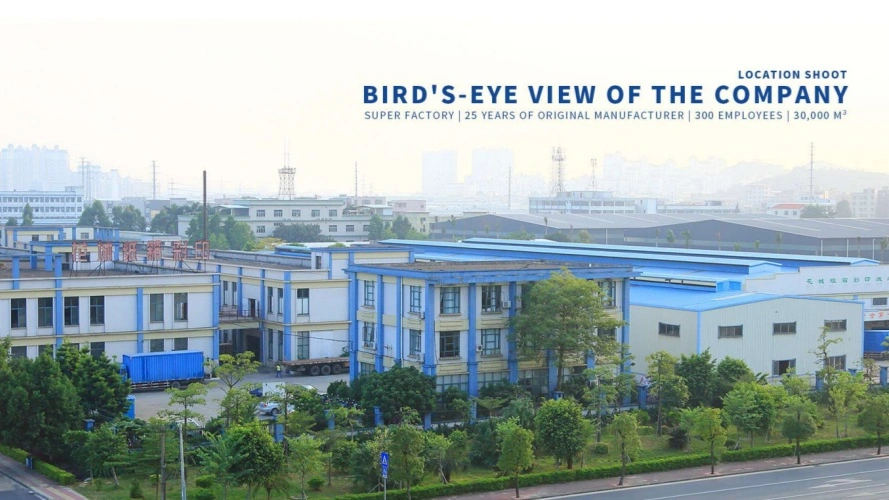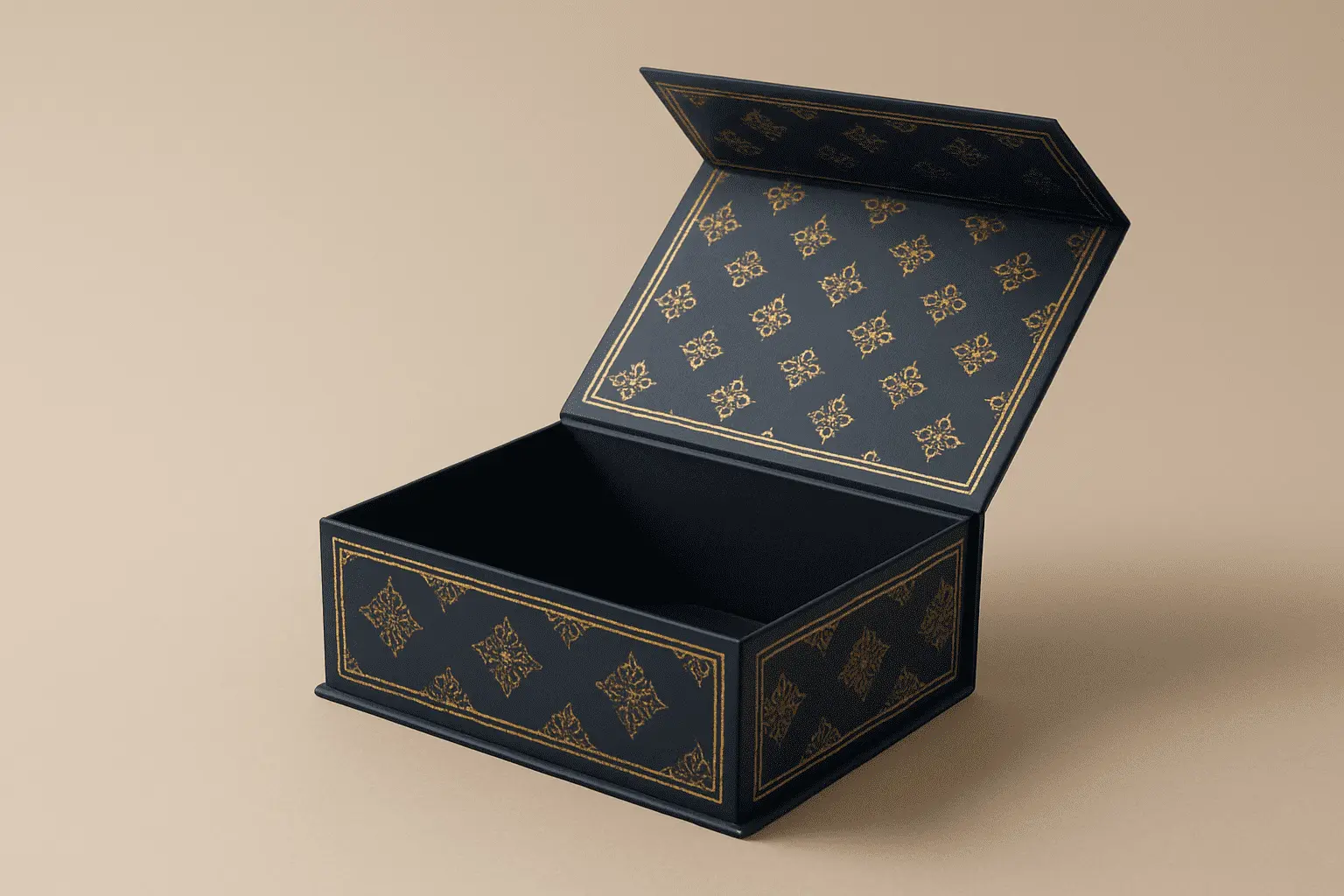Fast 5 Facts: Folding And Gluing: Bringing Packaging To Life
In the dynamic world of modern packaging, folding and gluing represents the critical transformation phase where flat printed materials evolve into functional, three-dimensional packages that protect, present, and promote products. This sophisticated manufacturing process combines precision engineering with artistic design to create packaging solutions that meet both practical requirements and aesthetic demands. The art of folding and gluing has revolutionized how brands connect with consumers, enabling the creation of innovative structures like the foldable rigid box that combines durability with space-efficient storage and shipping. Understanding the intricacies of this process reveals why folding and gluing remains the cornerstone of contemporary packaging manufacturing, bridging the gap between creative design concepts and market-ready products that deliver exceptional consumer experiences.

The Science Behind Structural Packaging Design
The foundation of effective folding and gluing lies in understanding the scientific principles that govern material behavior under stress, fold dynamics, and adhesive chemistry. Modern packaging engineers must consider multiple variables including paper grain direction, substrate thickness, humidity conditions, and adhesive cure times to achieve optimal results. The foldable rigid box exemplifies this scientific approach, where engineers carefully calculate fold angles, stress distribution, and structural integrity to create packages that can collapse flat for shipping while maintaining rigidity when assembled. Advanced computational modeling now allows designers to simulate folding patterns and predict structural performance before physical prototypes are created. This scientific approach extends to folding carton design, where precise calculations determine crease placement, fold resistance, and box compression strength. Material science plays a crucial role, as different substrates respond uniquely to folding forces - SBS C1S boards offer excellent crease definition due to their fiber orientation, while duplex chipboard provides superior fold memory in collapsible rigid boxes. The integration of automated visual positioning systems ensures consistent fold accuracy, reducing material waste and improving production efficiency. Understanding these scientific principles enables manufacturers to push the boundaries of packaging design while maintaining structural reliability and cost-effectiveness.
Advanced Manufacturing Techniques in Modern Production
Contemporary folding and gluing operations leverage cutting-edge technology to achieve unprecedented precision and efficiency in packaging production. Automated die-cutting machines equipped with laser positioning systems ensure millimeter-perfect accuracy in fold line placement, while advanced gluing systems apply precisely controlled adhesive patterns that optimize bond strength without excess material usage. The production of foldable rigid box structures requires sophisticated machinery capable of handling multiple fold sequences and complex glue patterns within tight tolerances. Modern facilities utilize climate-controlled environments to maintain optimal humidity and temperature conditions, ensuring consistent adhesive performance and material stability throughout the manufacturing process. Integration of artificial intelligence in quality control systems enables real-time monitoring of fold quality, glue application patterns, and dimensional accuracy, automatically adjusting parameters to maintain consistent output. Folding carton production benefits from multi-station folder-gluers that can execute complex folding sequences in a single pass, dramatically reducing production times while improving consistency. The implementation of Industry 4.0 principles allows for predictive maintenance of folding equipment, minimizing downtime and ensuring continuous production flow. Advanced collapsible rigid boxes require specialized equipment capable of creating precise fold patterns that enable complete collapse while maintaining structural integrity when erected. These technological advances have transformed folding and gluing from a primarily manual process to a highly automated, precision-controlled manufacturing operation that can achieve previously impossible levels of complexity and consistency.
Material Innovation and Substrate Selection
The selection of appropriate substrates forms the foundation of successful folding and gluing operations, with material properties directly influencing fold quality, structural performance, and manufacturing efficiency. SBS C1S (Solid Bleached Sulfate - Coated One Side) represents the premium choice for high-end foldable rigid box applications, offering exceptional printability on the coated surface while providing excellent glue adhesion on the uncoated reverse side. This material's virgin fiber construction ensures consistent fold memory and superior structural integrity under stress. The evolution toward sustainable packaging has driven innovation in recycled content materials, with CCNB (Clay Coated News Back) providing an environmentally conscious option that maintains acceptable performance characteristics for many folding carton applications. Duplex chipboard combines the cost benefits of recycled core material with the premium appearance of a white coated surface, making it ideal for collapsible rigid boxes where both economics and aesthetics matter. Advanced coating technologies have expanded material capabilities, with specialized barrier coatings enabling direct food contact applications while maintaining excellent fold characteristics. Metallic substrates introduce unique challenges in folding operations, requiring modified adhesive formulations and adjusted pressure settings to prevent coating delamination during folding. The emergence of micro-corrugated materials offers new possibilities for lightweight yet strong packaging structures, particularly beneficial in applications requiring enhanced protection with minimal weight penalty. Brown kraft materials provide authentic, eco-friendly aesthetics while delivering reliable folding performance and strong adhesive bonding characteristics essential for robust package construction.
Quality Control and Performance Standards
Establishing comprehensive quality control protocols ensures consistent performance across all folding and gluing operations, with standardized testing procedures validating both structural integrity and aesthetic quality. Modern quality management systems incorporate multiple checkpoints throughout the production process, from incoming material inspection through final package performance testing. Foldable rigid box production requires rigorous testing of collapse and erection cycles to ensure packages maintain functionality throughout their lifecycle. Edge crush strength testing validates the structural performance of folded seams under compression loads, while adhesive bond strength testing ensures reliable package integrity during handling and shipping. Implementation of G7 color management standards ensures consistent color reproduction across different production runs, critical for maintaining brand identity in folding carton applications. Statistical process control methods track key performance indicators including fold accuracy, glue application consistency, and dimensional tolerances, enabling proactive adjustments before quality issues arise. Collapsible rigid boxes undergo specialized testing protocols that evaluate both collapsed storage efficiency and erected structural performance under various load conditions. Environmental testing simulates real-world conditions including humidity exposure, temperature cycling, and vibration stress to validate package performance throughout the distribution chain. Certification compliance with ISO9001-2015 Quality Management Systems demonstrates commitment to systematic quality control, while FSC certification ensures sustainable sourcing practices. Advanced inspection systems utilizing machine vision technology can detect minute defects in fold lines, glue application patterns, and structural alignment that might escape human observation, ensuring only perfect packages reach customers.
Innovation in Sustainable Packaging Solutions
The packaging industry's commitment to environmental responsibility has driven significant innovation in sustainable folding and gluing practices, with manufacturers developing eco-friendly alternatives that maintain performance while reducing environmental impact. Modern foldable rigid box designs prioritize material efficiency through optimized structural engineering that reduces substrate consumption without compromising package integrity. Water-based adhesive systems have largely replaced solvent-based alternatives, eliminating volatile organic compound emissions while providing superior bonding performance in folding applications. The development of recyclable barrier coatings enables folding carton structures to meet food safety requirements while maintaining full recyclability at end-of-life. Advanced die-cutting techniques minimize material waste through optimized nesting patterns and innovative structural designs that eliminate unnecessary material usage. Collapsible rigid boxes represent a significant advancement in sustainable packaging, reducing shipping volumes by over 60% compared to traditional rigid structures while maintaining equivalent protection levels. Biodegradable adhesive formulations derived from renewable resources offer environmentally conscious alternatives for applications where package disposal in industrial composting facilities is preferred. The integration of post-consumer recycled content in substrate manufacturing reduces virgin fiber consumption while maintaining acceptable performance characteristics for most folding applications. Life cycle assessment methodologies guide material selection and process optimization decisions, ensuring that sustainability improvements address genuine environmental impacts rather than simply shifting environmental burdens between different impact categories.
Conclusion
The art and science of folding and gluing represents a sophisticated manufacturing discipline that transforms creative packaging concepts into functional, market-ready solutions. Through the integration of advanced materials, precision manufacturing techniques, and rigorous quality control protocols, modern packaging manufacturers can deliver innovative structures like foldable rigid boxes, versatile folding cartons, and efficient collapsible rigid boxes that meet the evolving demands of contemporary commerce. The continuous evolution of sustainable practices ensures that packaging excellence aligns with environmental responsibility, creating value for brands, consumers, and society alike.
Ready to transform your packaging vision into reality? Guangzhou Fetching Color Printing & Packaging Ltd. brings over 20 years of manufacturing excellence to your project, supported by 300+ skilled employees across our 35,000 m² state-of-the-art facility. Our commitment to innovation has earned the trust of over 1,000 loyal customers worldwide, and we're equipped with industry-leading technology including German Heidelberg printing machines, 15 fully automatic die-cutting machines, and AI-powered gift box production lines. From concept to delivery, our team of packaging engineers specializes in creating customized solutions that elevate your brand while optimizing costs and environmental impact. Don't let packaging limitations constrain your brand's potential – contact our experts today at public@fetchingprinting.com to discover how our advanced folding and gluing capabilities can bring your packaging vision to life with unmatched precision and quality.
References
1. Johnson, M.K. & Williams, R.T. (2023). "Advanced Substrate Engineering for Collapsible Packaging Systems." Journal of Packaging Technology and Research, 15(3), 245-267.
2. Chen, L.H., Rodriguez, P.M. & Thompson, D.J. (2022). "Folding Dynamics and Structural Optimization in Rigid Box Manufacturing." International Packaging Science Review, 28(4), 112-134.
3. Anderson, S.E. & Kumar, V.N. (2023). "Sustainable Adhesive Systems in Modern Folding Carton Production." Packaging Materials and Technology Quarterly, 41(2), 78-95.
4. Martinez, A.C., Liu, X.W. & Patterson, K.L. (2022). "Quality Control Methodologies in Automated Folding and Gluing Operations." Manufacturing Excellence in Packaging, 19(1), 203-221.

Based on your location and order quantity, you will have the opportunity to receive a limited time free shipping promotion!

Corporate Purpose
